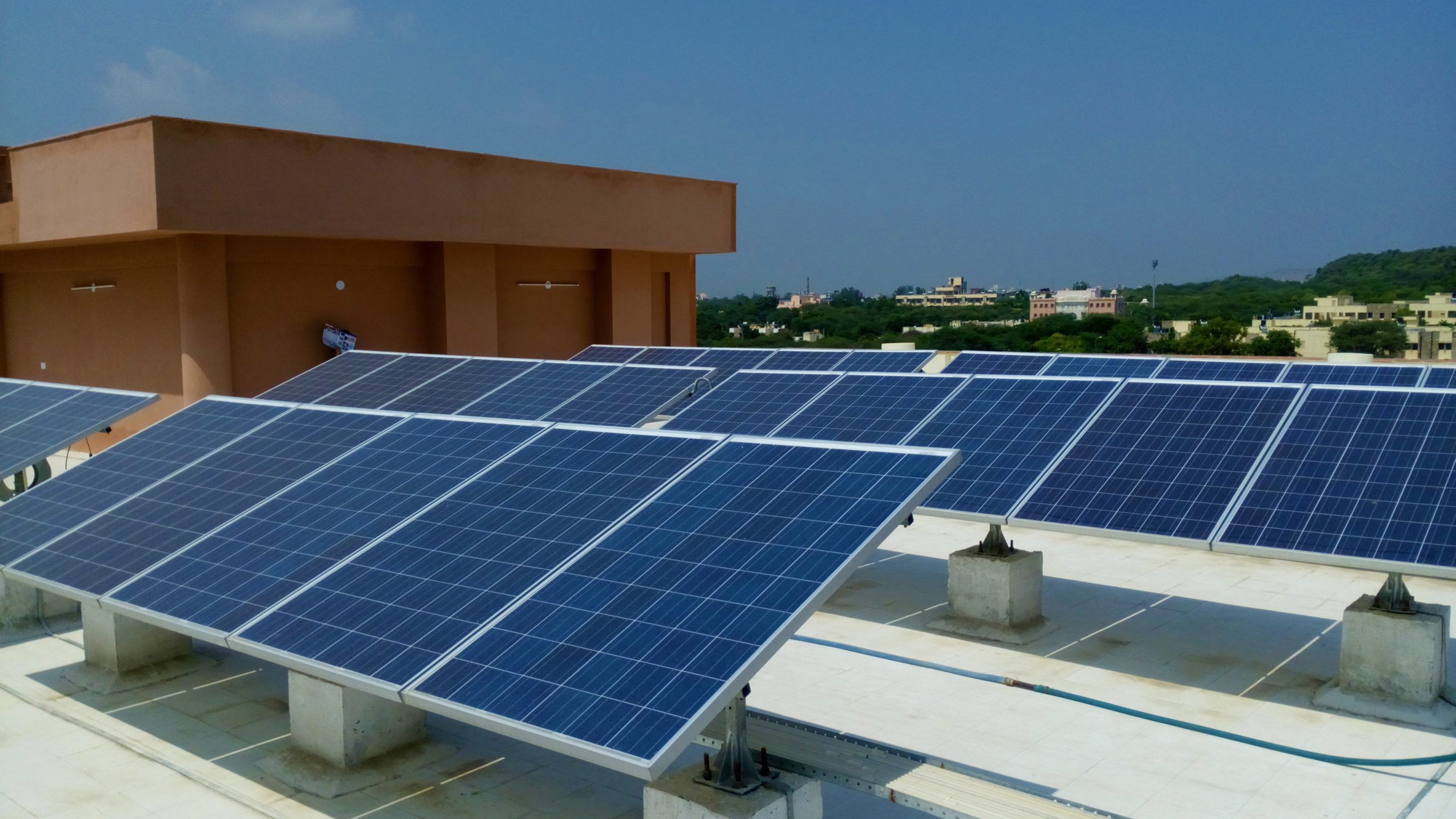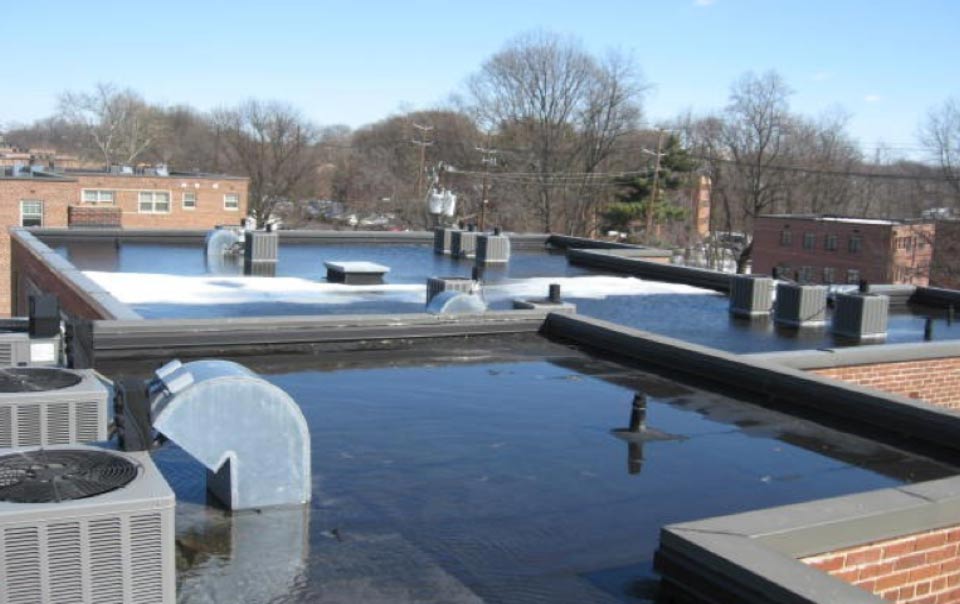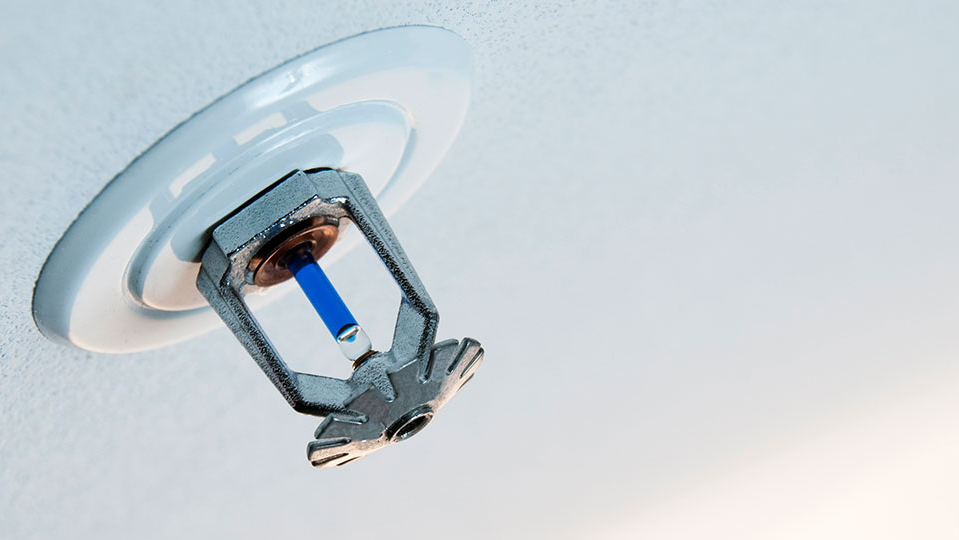How Educational Institutions Can Take Advantage of Solar Panel Installations


Many university and college campuses function like mini cities, with operations such as housing, healthcare and utilities creating a multitude of challenges and opportunities. With an increasing focus on environmental sustainability and stewardship, the education sector is reaping benefits from green initiatives yet encountering a new set of potential risks and exposures as a result.
Solar panel installations on campus
As the U.S. seeks to reduce dependence on fossil fuels, solar installations are an increasingly popular and renewable energy source. Considered one of the cleanest and greenest sources of electricity, solar represented approximately 46% of new U.S. electric generation capacity in 2022.1
More higher education institutions are considering photovoltaic (PV) solar panel installations, as costs for this energy-efficient solution have dropped significantly over the last decade2 and federal incentives, like those in the Inflation Reduction Act, are driving up solar usage.3 University and college campuses can extract value from rooftops, parking garages, parking lots or other spaces by retrofitting PV panels, installing stand-alone solar arrays or incorporating them into new builds. Not only can this source of energy help reduce carbon emissions, but it can also serve as an educational model for students interested in learning about sustainable clean energy practices.
Still, solar energy is not without its challenges. Solar panels can be affected by ever-changing environmental conditions, such as high winds, heavy rain, snow and hail. When energized, these complex systems can present risks particularly without proper installation and regular maintenance by knowledgeable professionals.
As higher education institutions turn their focus toward furthering sustainability and choose solar energy, it’s important to understand and manage the risks as well as the rewards of this viable renewable energy solution.
Did you know?
The Sustainability Tracking, Assessment & Rating System (STARS) reports that 351 institutions across the globe currently receive a valid rating for using renewables on campus.4
Solar photovoltaic (PV) panels vs. solar thermal systems
Depending on energy needs and specific applications, universities and colleges can utilize both solar panels and solar thermal systems or choose between the two. Solar PV and solar thermal both harness energy from the sun but for different purposes. Photovoltaic systems convert sunlight directly into electricity and are commonly used to generate renewable electricity that can power buildings, lighting systems and various electrical devices.
Photovoltaic panels are made of small cells of semiconductors that are connected to one another and encased in protective materials made of glass or plastics. These panels are joined together to form an array that is then connected to the electrical grid. The cells convert sunlight (photons) into direct current (DC) electricity.5 Inverters change this into alternating current (AC) and distribute it throughout the electrical grid.6
Thermal solar typically uses solar collectors to absorb sunlight and transfer the heat to a fluid that can then be used for hot water needs like heating swimming pools or supporting HVAC systems.7
As the popularity of electric cars grows, university leaders might consider installing car charging stations on campus. Microgrids, a smaller PV array operating independently or in concert with the larger energy grid, can power these EV chargers without adding expense and strain on current energy sources. Chargers on a microgrid can service vehicles when other power sources go dark, can incorporate battery systems that store energy for later use, or can be sold back to the public grid.8
The advantages of going solar
Solar leads to energy cost savings
According to the National Renewable Energy Laboratory, the higher education sector is at the forefront of renewable energy commitments, as it spends more than $6 billion annually on energy costs.9 Between the affordability of PV, government rebates and fluctuating energy costs across the country, switching to a reliance on solar can lead not only to savings in energy spending but better forecasting and budget planning.
Colleges and universities looking for affordable solar projects may want to consider Power Purchase Agreements (PPA) to bring solar options to campus with less upfront investment.
PPAs pair educational institutions with private investors who seek to install, own and maintain solar while providing lower power rates for the school. Already, PPAs have enabled more than 100 megawatts (MW) of solar deployment on campuses around the country.10
Alternative energy can offer more control
Adding PV solar energy capacity helps reduce dependence on the common energy grid by generating power that is used before other sources.11 Access to an alternative energy source may reduce interruptions in service when the local energy grid malfunctions. It also gives colleges the potential to remain powered during localized outages or when natural disasters knock out grid service.
A small Connecticut college recently celebrated the construction of a 770-kilowatt carport photovoltaic solar power system located in parking lots throughout the campus. The initiative is expected to offset approximately 30% of the school’s annual electricity consumption.12
PV shows students a commitment to sustainability
Today’s college students tend to be environmentally conscious and factor sustainability and environmental practices into their decision-making. Energy produced from solar PV technology does not produce carbon or other harmful greenhouse gases when operating,13 and campus solar installations can be positive and visible indicators of a school’s commitment to climate concerns for students, prospective and current.
Opportunities for student learning
Integrating solar panels into educational environments can create rich opportunities for student learning. Universities and colleges can:
- Incorporate renewable energy education into science, technology, engineering and math (STEM) curricula.
- Provide students with hands-on learning experiences related to system monitoring and maintenance, and data analysis to track energy production and other efficiency factors.
- Offer interdisciplinary project opportunities involving disciplines like engineering, environmental studies, business and architecture.
Managing the risks of going solar
1. Weather and location
![]()
PV panels are typically built to withstand the elements, such as storms, snow and wind. However, exposure to catastrophic weather events such as hurricanes and tornadoes can result in damage from lightning strikes, extreme winds that bend framing and cause flying debris, and flooding that may lead to electrical shorts.
Severe hail measuring 25 mm or more in diameter is the most common contributor to insured losses on solar PV systems.14 Campuses in Texas and America’s heartland should know these states have a high risk of encountering hail-producing severe weather.15
To mitigate this risk, request that the module manufacturer provide proof of passing a hail test above minimum International Electrotechnical Commission requirements and select a tracker system that can engage in a hail stow mode that rotates the panels to a higher tilt.
2. Design and construction integrity
![]()
Potential construction risks associated with roof-mounted PV systems include increased structural load, access to other systems, poor electrical installation and invalidating warranties. These are best mitigated by exercising diligence in planning the work. Important steps include pre-design and pre-installation evaluations, selection of licensed and experienced vendors, evaluating third-party contracts, and understanding building codes and requirements for the design and installation phases of the PV system.
Even though campus buildings may be good candidates for solar, it’s important to have a licensed structural engineer evaluate and determine whether the structure can safely support the new load. This evaluation may require the engineer to interpret various building codes and standards, as existing building codes may not provide adequate guidance for wind forces and structural capacity presented by rooftop solar panel systems. Solar installations can add weight to a rooftop that already must meet code for potential wind, water, snow loads and seismic impacts, depending on geographic location. Additionally, solar installations should not interfere with lightning protection systems.
3. Fire
![]()
With nearly 2 million solar installations throughout the U.S., the issue of fire safety is a growing concern. Faulty design and installation, component defects and poor maintenance can lead to solar transformers or inverters igniting rooftop fires.16 Although still considered uncommon, when solar installations do ignite, the flames are difficult to contain, and the damage can be severe.17
Traditional firefighting procedures may not always be effective in extinguishing these extreme fires. Currently, national standards are being adapted for fighting solar panel array fires.18 Preventive practices include performing regular maintenance and inspections along with infrared testing to identify potential hot spots. Most important, installers should be well-versed in the National Electrical Code safety standards for solar energy system surge protection, installation design and more.
4. Maintenance
![]()
Performing proactive monitoring and maintenance is critically important. Solar installations should be properly secured on the rooftop. Regular inspections should include looking for physical damage that may occur such as loose wires, which can result in a fire hazard.
Solar adopters can take advantage of advancements in technology to help monitor their systems. These include sensors, infrared cameras and remote access drones to measure solar panels and system efficiency and provide alerts of potential problems. Concerns to look for include roof leaks or water damage and flaws in the panel installation.
Another important consideration involves replacing worn or broken parts. Because some solar equipment and parts may take nearly a year to arrive after ordering, organizations will want to understand equipment warranties, plan for repairs and parts replacements, and consider participating in spare parts programs to help manage any supply chain issues.
5. Vegetation management
![]()
For solar ground installations, vegetation maintenance can be a critically important part of a strong operations and management program. This should include attention to grass, weeds, bushes, trees and other landscaping near the solar installation that poses the potential risk of fire or damage. Overgrowth and debris can block panels from absorbing sunlight. Dry grasses growing close to modules on the ground, for instance, can ignite from a single spark near a junction box or from solar cell failure.
Storm water from improperly maintained drainage and overgrowth may cause damage to panels and racking. Wildlife living in the area can chew wires and compromise systems. When this happens, universities and colleges may be faced with significant costs from multiple sources. These include property loss or reduced energy output or service interruption as well as the costs to service and/or repair equipment and systems.19
Vegetation management plans can help mitigate these concerns and should include strategic planting manual cutting and, if appropriate, application of herbicides to control weeds and overgrowth.
6. Security
![]()
Beyond the usual security issue of intentional damage, new solar users should be aware that the power grid has become an increasingly popular victim of cybercrime. A breach of operating technology and solar inverters can lead to shutdowns that cause costly business interruptions. According to the office of Energy Efficiency and Renewable Energy, in 2019, “hackers breached a utility’s web-portal firewall, causing operators to lose visibility of parts of the grid intermittently for 10 hours.”20
Educational organizations can manage vulnerabilities by layering security measures across individual components and whole systems. Some of these options include installing intrusion-detection software, antivirus software and virus protection and detection on firewalls and servers.21
7. Liability
![]()
As long as solar modules are exposed to light, electricity is being produced, creating a possible exposure to electrical current to those who work or live around them. This exposure is enough to present an electrical hazard to unqualified and untrained workers who might be on the roof performing routine building maintenance. Organizations may benefit from creating safety programs that address fall protection, personal protective equipment, secured access and lockout/tagout programs.
Even firefighters responding to a fire at an array are at risk if a system does not include a mechanism for rapidly shutting down the system to create a safe zone at the module level. Inverters and related equipment should be located in spaces reasonably safe from public access and exposure to damage or other risks.
Partner with an experienced insurance carrier
Renewable energy technology — from solar to wind and geothermal systems — is evolving rapidly, bringing with it new opportunities and challenges. Travelers has risk control professionals dedicated to the renewable energy industry. Their deep expertise can provide universities and colleges with tailored recommendations to help manage risks and safeguard clean energy investments.
Sources:
1 https://www.nrel.gov/docs/fy23osti/86215.pdf
2 https://www.nrel.gov/news/program/2021/documenting-a-decade-of-cost-declines-for-pv-systems.html
3 https://www.whitehouse.gov/cleanenergy/directpay/
4 https://reports.aashe.org/institutions/participants-and-reports/
5 https://www.eia.gov/energyexplained/solar/photovoltaics-and-electricity.php#:~:text=Photovoltaic%20cells%20convert%20sunlight%20into,or%20particles%20of%20solar%20energy
6 https://energytheory.com/solar-thermal-vs-photovoltaic-an-overview/
7 https://www.energy.gov/eere/solar/concentrating-solar-thermal-power-basics
8 https://www.nrel.gov/docs/fy11osti/50304.pdf
9 https://www.nrel.gov/docs/fy18osti/71822.pdf
10 https://www.nrel.gov/docs/gen/fy16/65567.pdf
11 https://ourworldindata.org/energy
12 https://www.eia.gov/energyexplained/solar/solar-energy-and-the-environment.php
13 https://www.albertus.edu/news-events/news-items/albertus-magnus-college-the-future-is-bright-albertus-installs-solar-panels.php
14,15 https://www.energy.gov/femp/hail-damage-mitigation-solar-photovoltaic-systems
16,17,18 https://www.energy.gov/eere/solar/consumers-guide-fire-safety-solar-systems
19 https://www.travelers.com/resources/business-industries/energy/vegetation-management-renewable-energy
20,21 https://www.energy.gov/eere/solar/solar-cybersecurity-basics



